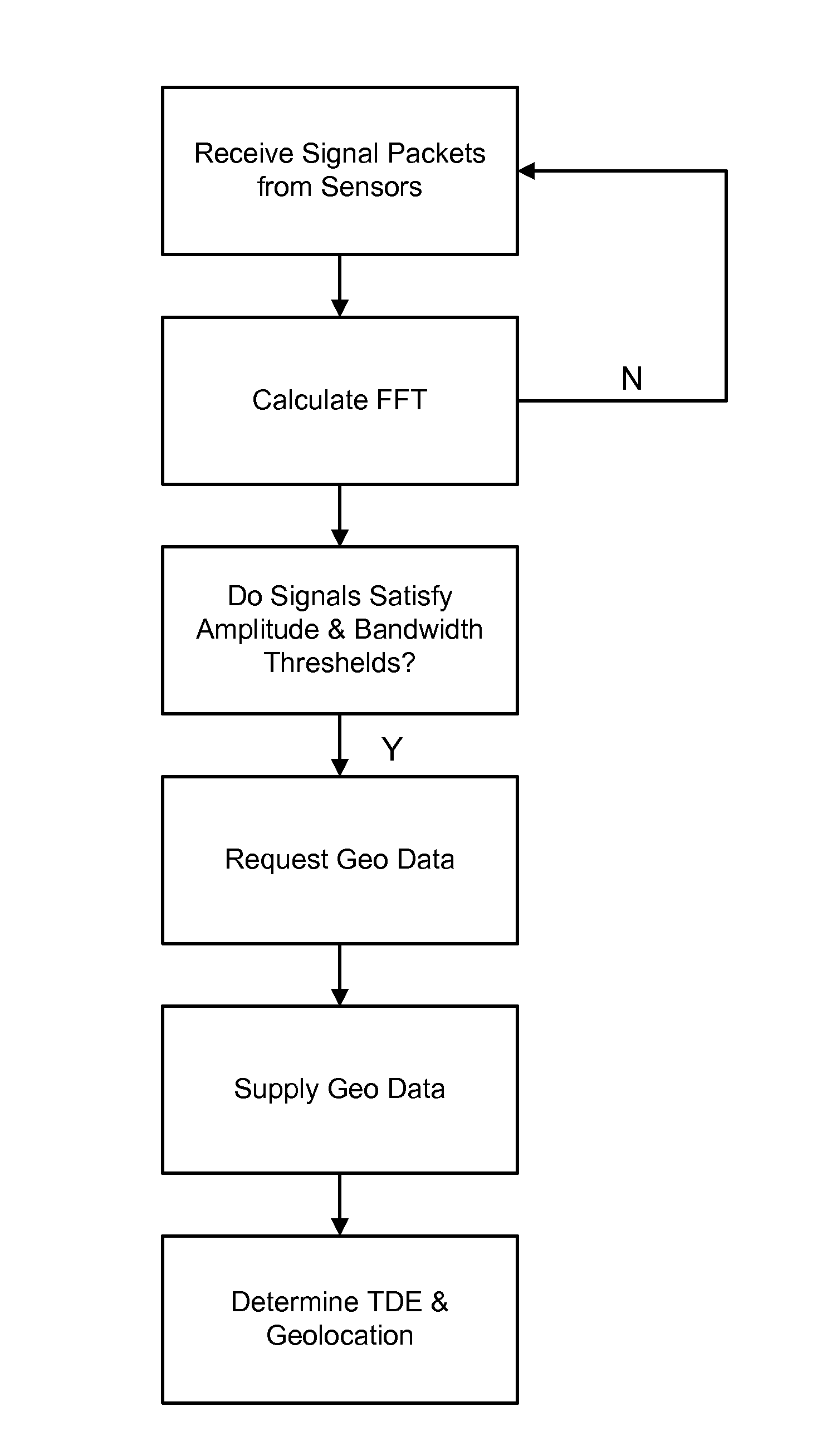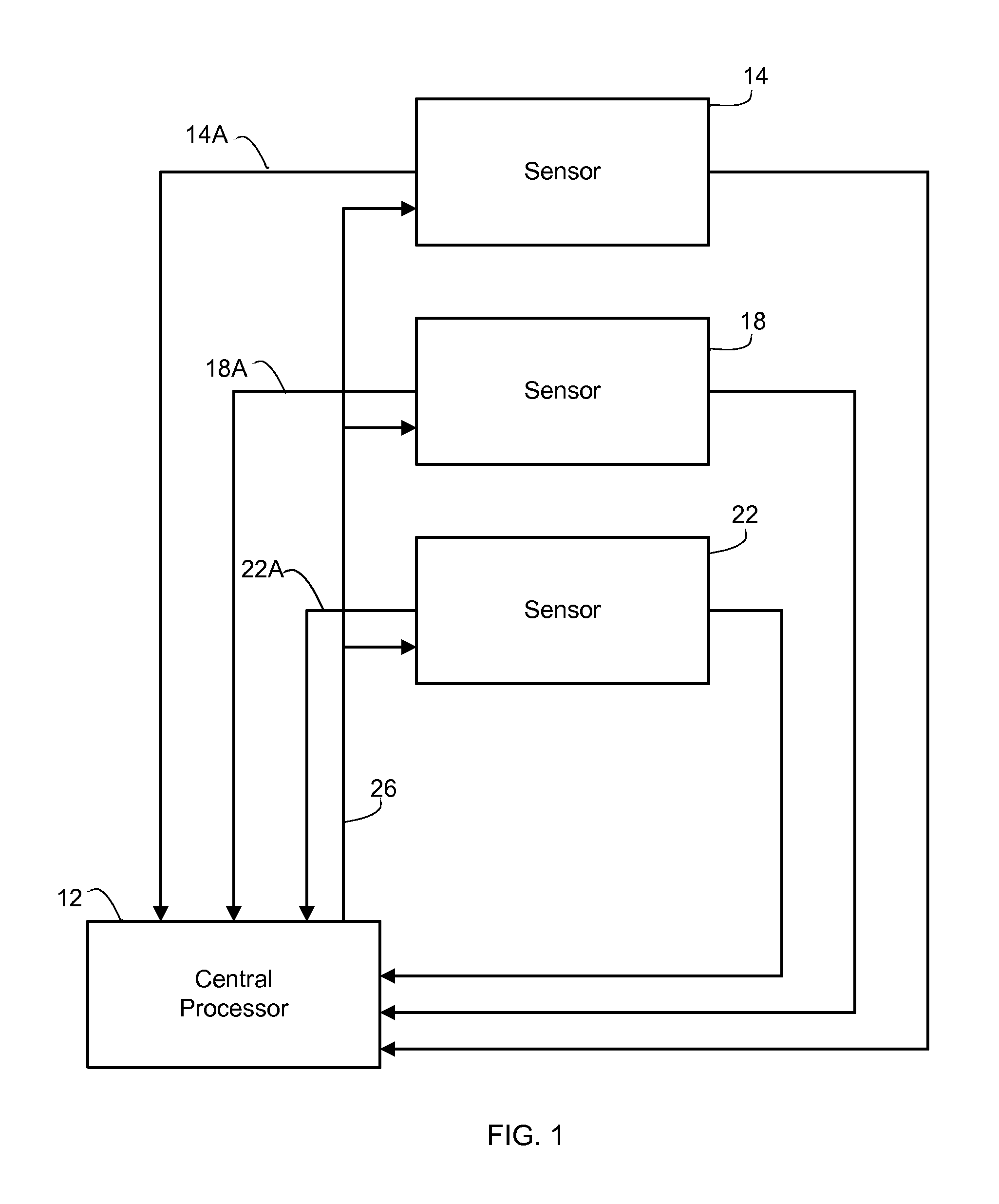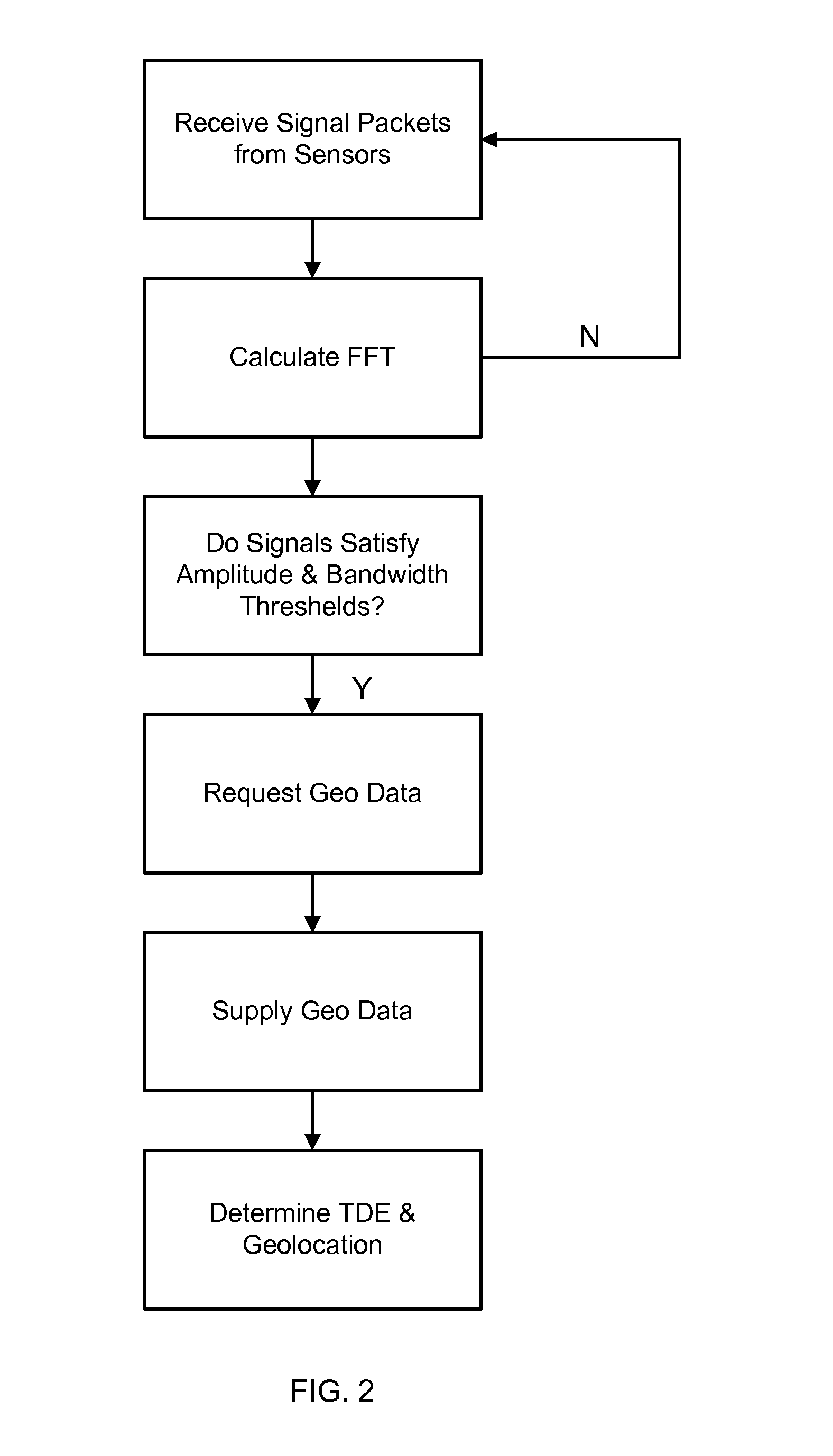Apparatus and method for determining signal quality in a geolocation system
a geolocation system and signal quality technology, applied in direction finders, direction finders using radio waves, instruments, etc., can solve the problems of reducing the accuracy of the target's determined location, and it is not possible to determine a precise location for a target uni
- Summary
- Abstract
- Description
- Claims
- Application Information
AI Technical Summary
Benefits of technology
Problems solved by technology
Method used
Image
Examples
Embodiment Construction
[0010]Before describing in detail the particular apparatuses and methods for determining modulation quality of a signal, in accordance with the various embodiments of the present invention, it should be observed that these embodiments reside primarily in a novel combination of hardware and software elements related to the claimed apparatuses and methods. Accordingly, the hardware and software elements have been represented by conventional elements in the drawings, showing only those specific details that are pertinent to the presented embodiments, so as not to obscure the disclosure with details that will be readily apparent to those skilled in the art having the benefit of the description herein.
[0011]The following embodiments are not intended to define limits as to the structures or methods of the invention but only to provide exemplary constructions. The embodiments are permissive rather than mandatory and illustrative rather than exhaustive.
[0012]Known statistical techniques pro...
PUM
 Login to View More
Login to View More Abstract
Description
Claims
Application Information
 Login to View More
Login to View More - R&D
- Intellectual Property
- Life Sciences
- Materials
- Tech Scout
- Unparalleled Data Quality
- Higher Quality Content
- 60% Fewer Hallucinations
Browse by: Latest US Patents, China's latest patents, Technical Efficacy Thesaurus, Application Domain, Technology Topic, Popular Technical Reports.
© 2025 PatSnap. All rights reserved.Legal|Privacy policy|Modern Slavery Act Transparency Statement|Sitemap|About US| Contact US: help@patsnap.com



